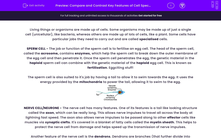Living things or organisms are made up of cells. Some organisms may be made up of just a single cell (unicellular), like bacteria, whereas others are made up of lots of cells, like a plant. Some cells have particular jobs they need to carry out and are called specialised cells.
SPERM CELL - The job or function of the sperm cell is to fertilise an egg cell. The head of the sperm cell, called the acrosome, contains enzymes, which help the sperm cell to break down the outer membrane of the egg cell and then penetrate it. Once the sperm cell penetrates the egg, the genetic material in the haploid sperm cell can combine with the genetic material of the haploid egg cell. This is known as fertilisation. Eggciting stuff!
The sperm cell is also suited to it's job by having a tail to allow it to swim towards the egg. It uses the energy provided by the mitochondria to power the tail, allowing it to swim to the egg.
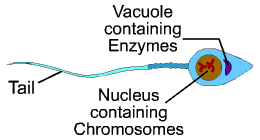
NERVE CELL/NEURONE - The nerve cell has many features. One of its features is a tail like looking structure called the axon, which can be really long. This allows nerve impulses to travel all across the body at lightning fast speed. The axon also allows nerve impulses to be passed along to other effector cells like muscles via synaptic clefts. It's covered in a blanket of fatty cells called the myelin sheath. This helps to protect the nerve cell from damage and helps speed up the transmission of nerve impulses.
Another feature of the nerve cell is the dendrons. Dendrons are branches (that further divide into dendrites), which receive nerve impulses from other nerve cells.
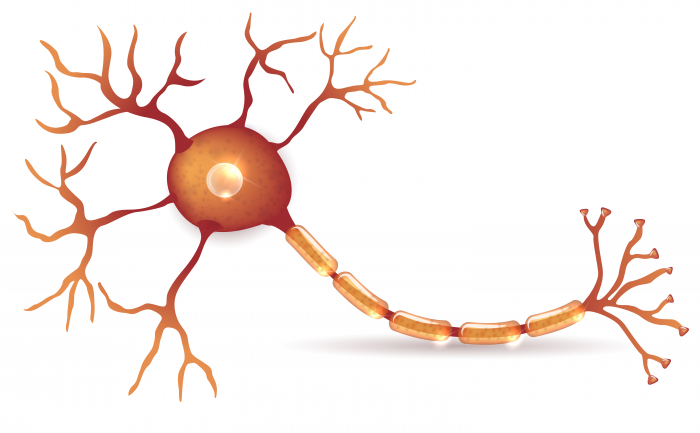
MUSCLE CELLS - These are made up of protein filaments and are arranged in bundles, which means that the muscle can contract, or shorten. There are three main types: skeletal, cardiac and smooth. Skeletal muscles are connected to our bones, which allows us to move. We have control over our skeletal muscles. Cardiac muscle cells, which make up the heart, contract rhythmically, allowing the heart to pump blood around the body. These muscles contract automatically. Smooth muscle cells are usually found lining our organs and can help with contracting, for example, your bladder. Smooth muscles also contract automatically (though we can control some types). Muscles contain mitochondria, allowing energy from respiration for muscle contraction.

What about plants? Yes, plants have specialised cells too!
ROOT HAIR CELLS - Root hair cells are tiny projections on the actual roots of the plant; they give the roots a bigger surface area, which allows more water to be in contact with the root hair cell. This basically means more water can be absorbed by osmosis. The thin walls of the roots mean that water and nutrients can pass into the plant super quick.
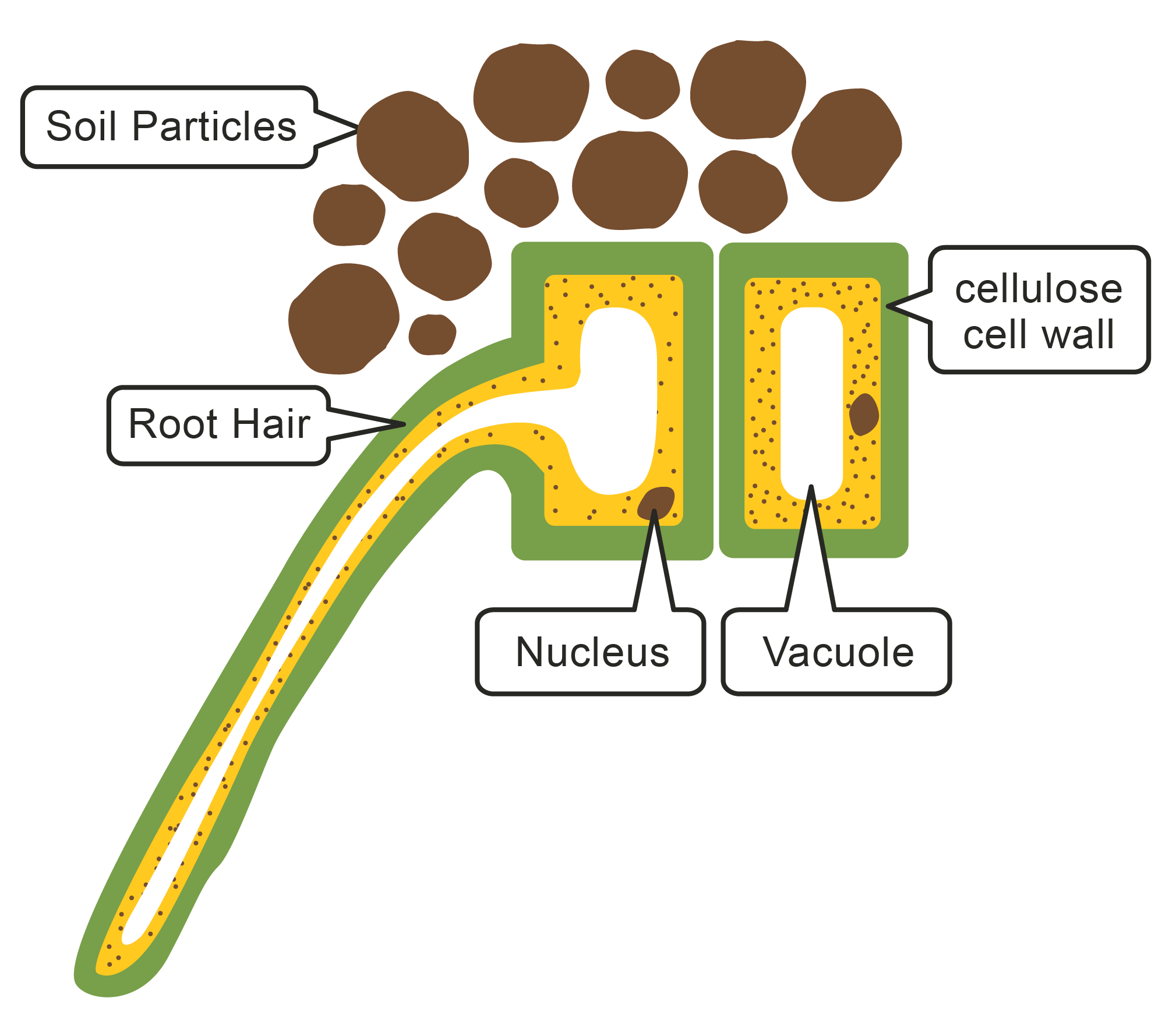
XYLEM AND PHLOEM CELLS - Xylem cells transport water in one direction (from the root to the leaves) and are made of a thick hardened non-living structure called lignin (in trees this is the woody part). The lignin helps to keep the plant upright and supported. Phloem cells transport glucose (produced from photosynthesis) and other substances, like amino acids, up and down the plant to where they are needed (this is called translocation). The mitochondria in the companion cells found next to the phloem cells provide the energy needed for the movement of substances around the plant. Unlike xylem, the phloem cells are living. Phloem cells also have fewer organelles, which allows the sugar to travel easily throughout the phloem. The phloem cells are connected by sieve plates and, as the name suggests, they look like sieves because of the holes in them. This speeds up translocation, as it allows the sugars to pass through the holes from cell to cell.
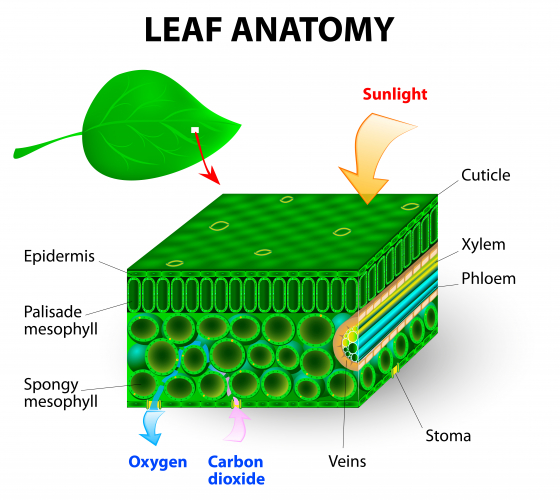
In the following activity, you will be comparing and contrasting the different specialised cells and how their adaptations help them to carry out their job.

